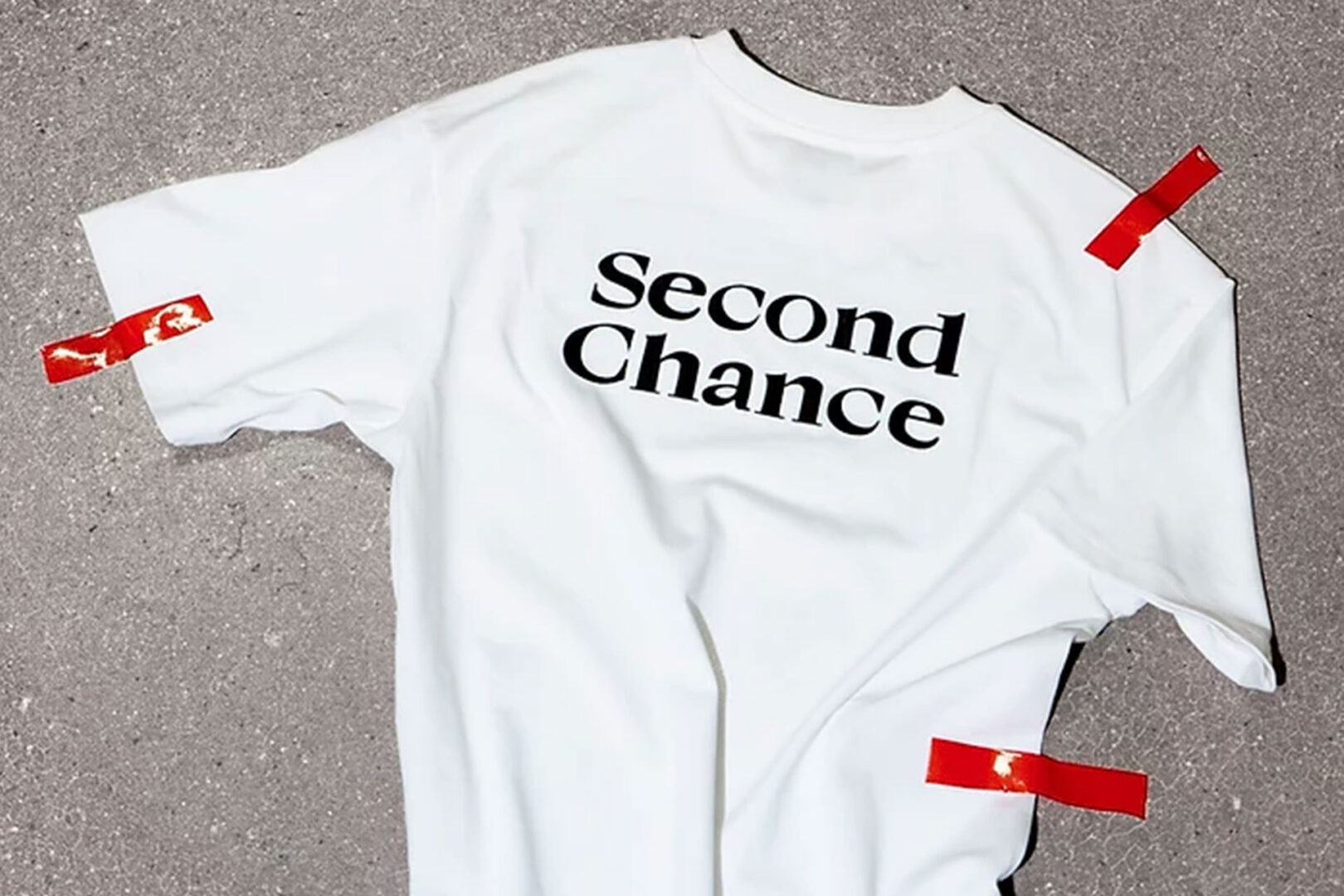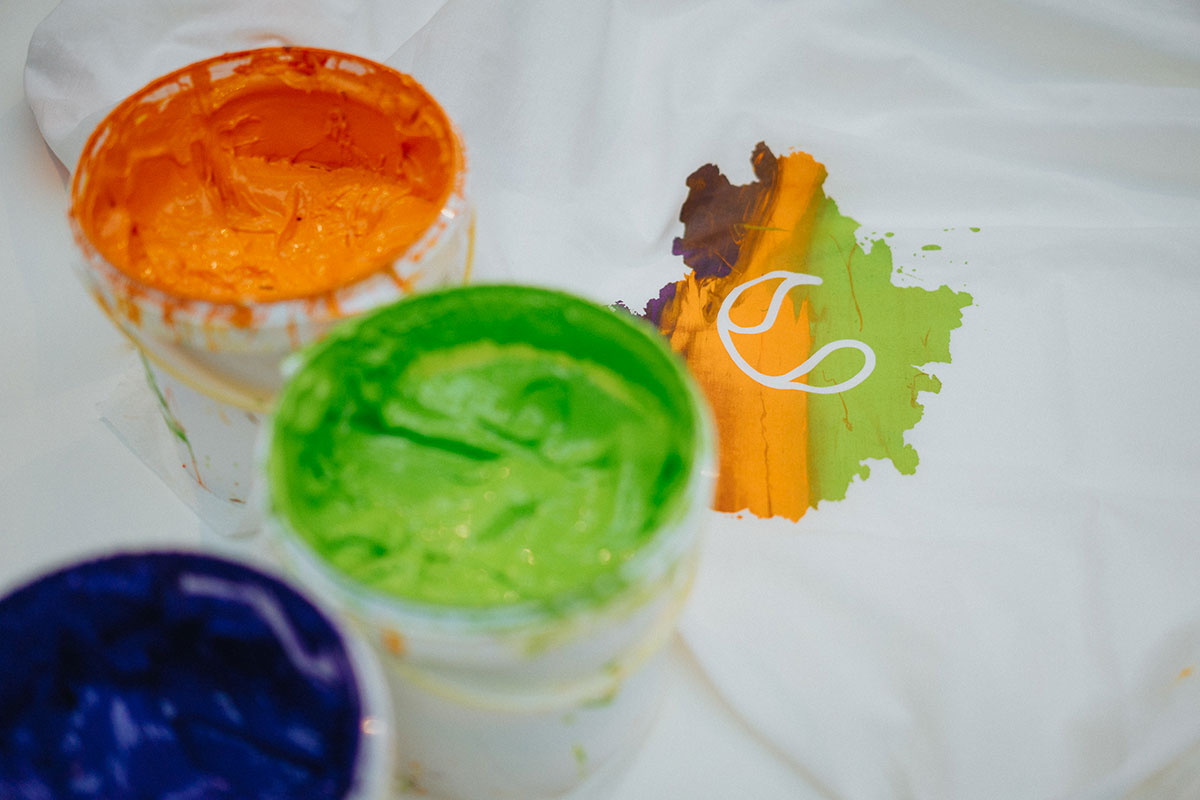A deeper look into the complacency recycling has lent to fashion consumers and the nuances that make or break efficient recycling processes; through the lens of start-up, Vividye
«Approximately twenty per cent is the percentage of all garment textiles printed. The problem with print is that it is a different material than the actual garment itself. This makes the recycling a very hard process». Gustav Larsson-Utas is the co-founder of Swedish eco-tech start-up, Vividye. He announces that their mission is to give garments multiple lives by converting them into a «blank canvas». For instance, this happens by using a reversible printing technology. In theory, a textile can go through printing, decoloring and re-printing without harming the material. Not only does this prolong the lifespan of clothing, it eases recycling processes. An additional benefit is the non-necessity of new primary resources for each production. This makes the concept less demanding on the planet as well.
What makes prints the unassuming culprits?
From screen-printing to digital printing, the different pigments used have a chemical composition that can restrain certain recycling processes. They can further pollute the environment if left to rot in landfills; now referred to as fashion graveyards. «Inks used in prints or logos usually have plastisol or some form of plastic. When those get into the recycling process, they could become like a glue», shares Gustav. Plastisol inks contain PVC, polyvinyl chloride as a base, which is harmful to the environment as well. In addition, aside from chemicals, there are other criteria that increases the ecological footprint of textile printing, a study revealed.
The areas to look into are Ink, electrical consumption and water. It further demonstrates the use of fifty to sixty liters of water per linear meter of screen printing a week. This is in comparison to twenty liters for digital printing of textiles. In that context, the Vividye team claims: «Our printing and decoloring processes have an excellent resource-efficiency. Especially in terms of water expenditure. They are completely safe for both humans and the environment».
The textile waste water generated from the printing and removal applications is both filterable and treatable according to Gustav. «We are developing a controlled process. Especially for the removal part of the chain. All the water we’re using will go through filtration before letting it out for the whole circular process. That’s the benefit of being a developing company. We can create the process ourselves and make it stable from the beginning».
Theory behind the technology
With the aim of prolonging textile durability for further recycling and reuse, Vividye merges chemistry, technology and textile knowledge. Without disclosing the operational details, Gustav shares: «A combination of the printing and removal process. This is what enables the garment to become a blank canvas on which you can make and remake repeatedly». To insure this cyclicity of garments, it is important to realize the inter-dependency between the two processes. The removal is possible only with the specific formula; adapted to the chemistry of the print itself. Easing the implementation of Vividye’s technology is the fact that there can be the integration of innovation onto existing infrastructure. Gustav explains: «We basically developed the technology but we don’t have to develop the whole infrastructure itself. It is something that you can retrofit onto existing machines».
Blank canvas: the impermanence of prints
There are limitations to the type of textiles that can use Vividye applications. Gustav refers to these whilst talking about the learning curve. «When we first started research years ago, it seemed possible to work on organic or natural fibers, like cotton. Now we are developing our technology. It works on all fibers, even synthetic ones like polyester. It only needs a little modification depending on the fiber».
Leasing multiple lives to a single garment raises the question of quality and longevity. The fabric can deteriorate and may ultimately need to be down-cycled. «Today, all prints are made to be permanent and that’s something we want to change. Either the garment is worn out before the print or sometimes the print needs to be updated before the garment is worn out. However the quality of the garment is never affected by the process of applying or removing our print».
The journey: from a university lab to a scaling start-up
The idea was born as a PhD project in Chalmers University of Technology, Sweden between two researchers in 2014. They realized an issue with color inefficiencies of textiles and recycling. Gustav and Vividye co-founder, Johanna Nissén Karlsson, stepped in as business developers in 2019. Furthermore, they founded the organization just a few days after the team received the Elle Conscious Award in 2020. Recently, the company has closed a seed round of investments at over four hundred thousand dollars by Chalmers Ventures. As well as, Almi Invest, Yuncture Invest, Daremont Invest and Louise Lundin. Gustav shares plans regarding the future of Vividye.
«There will be a main focus on the technology development. There’s always a way to perfect a system and we can make the technology even better. Make it circular and work with our partners». Moreover, Gustav talks about how the techniques can go beyond simply improving fast fashion businesses. It can delve into waste reduction across various industries that can benefit from circular textile printing. «Workwear, sportswear, promotion wear can all use our removal print. From company logos to names on football shirts, There are many different applications and it becomes interesting to up-cycle or make garments reusable». Still at infancy, the company has launched their first capsule with fashion e-tailer, Gina Tricot. Consumers can choose from a selection of limited edition t-shirts made of organic cotton and printed using Vividye technology.
What happens to un-recyclable garments?
«Consumers are responsible for Ten per cent of discarded clothes due to issues related to colors. And less than twenty per cent of clothes are reused or recycled once discarded. Removing color is one of the main obstacles in textile recycling». The Vividye team believes it’s time to look deeper into the complacency that fashion recycling has lent to consumers. A significant weightage is placed on dyes and prints; when it comes to the lack of recycling in used clothes. The issues are spread across the production chain of a garment. Right from the fibers and their blends to the accessories like zips and buttons.
Old cotton t-shirts rarely go into new ones because of the types of recycling for cotton textiles. For example, high quality fibers with long staple lengths get chopped up during recycling. They can no longer afford the wearer the same comfort when made into a garment. Event merchandise and promotional clothing is often for one-time use and tossed into charity donation boxes. Vividye combats such throw-away culture by allowing the re-printing and re-using of these garments. Instead of down-cycled and used for insulation, stuffing or cleaning rags. For instance, The idea is that the fashion industry can be within a closed-loop. This would mean items can circulate between factories, stores, homes, second-hand retailers and textile recyclers. To conclude, this would eliminate the need for landfills and secondary wastage entering the scheme – but it is a long road ahead.
Vividye
Swedish start-up founded in 2020 by Gustav Larsson-Utas and Johanna Nissén Karlsson. The company has developed a reversible printing technology. Vividye has recently launched its first capsule of t-shirts in collaboration with Gina Tricot.




















